What is a Receptionist Cover Letter
A receptionist cover letter is a crucial document that accompanies your resume when applying for a receptionist position. It’s your first opportunity to make a strong impression on a potential employer and showcase why you’re the perfect fit for the role. Unlike a resume, which provides a summary of your experience and skills, a cover letter allows you to elaborate on your qualifications, demonstrate your personality, and express your enthusiasm for the specific job and company. A well-crafted cover letter can significantly increase your chances of getting an interview by highlighting your key strengths and tailoring your application to the employer’s needs. It acts as a personal introduction, setting the tone for your application and giving you the edge over other candidates.
Why is a Cover Letter Important for a Receptionist
In the competitive job market, a cover letter is essential for standing out. For a receptionist position, a cover letter allows you to emphasize your interpersonal skills, which are paramount in this role. It shows the hiring manager your communication abilities, your understanding of the company’s needs, and your genuine interest in the position. This document provides a platform to highlight your personality and work ethic, which can sometimes be challenging to convey solely through a resume. By personalizing the cover letter, you demonstrate that you’ve taken the time to understand the role and company, which is something that can often be missed in a general application. It also allows you to address any gaps in your resume, such as career changes or periods of unemployment, providing context and reassurance to the employer.
Cover Letter Structure for Receptionists
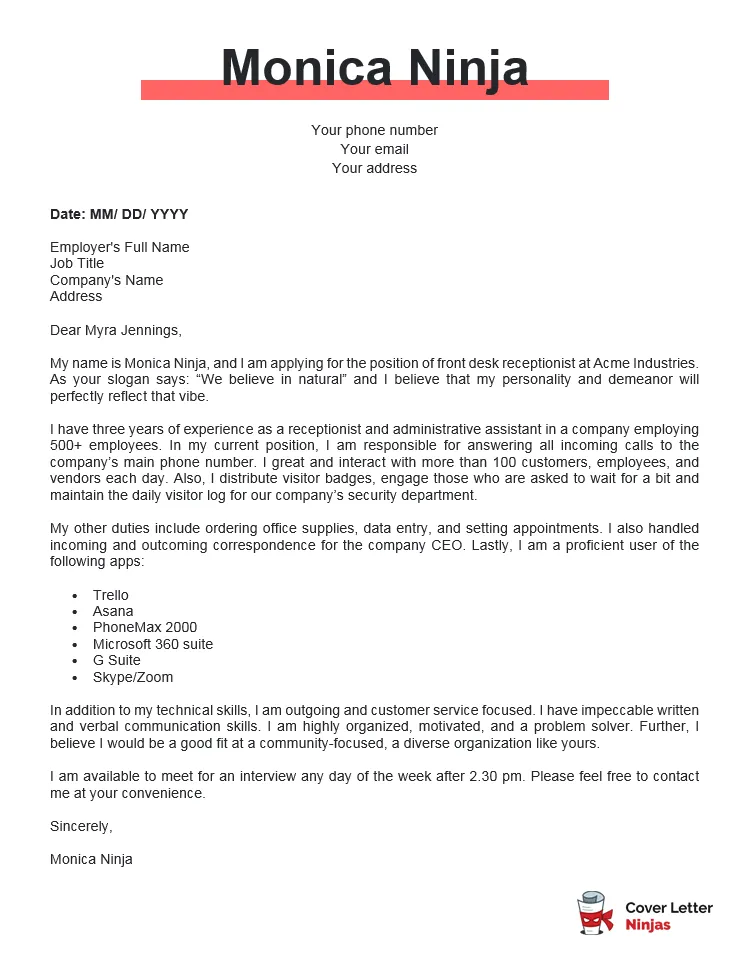
A well-structured cover letter is key to making a positive impression. It should follow a standard format to ensure it is easy to read and professional. You’ll need to include your contact information, the hiring manager’s details (if known), a professional greeting, an engaging opening paragraph, a section that highlights your skills, a section detailing your experience, a closing paragraph with a call to action, and a proper closing. Each component has a specific purpose and must be tailored to the job application. This organized approach ensures the letter is clear, concise, and provides the information needed for the hiring manager to assess your suitability for the role. A well-structured cover letter demonstrates your attention to detail and understanding of professional communication.
Your Contact Information
Start by including your full name, address, phone number, and professional email address at the top of the letter. Ensure your email address is appropriate and professional. This information allows the hiring manager to easily reach out to you. Double-check the accuracy of these details, as even a small error can hinder your chances of getting contacted.
Hiring Manager Information
If possible, address your cover letter to the hiring manager by name. Research the company or check the job posting to find this information. If you cannot find the name, use a general greeting such as “Dear Hiring Manager.” Addressing the letter to a specific person demonstrates that you’ve done your research and are genuinely interested in the role.
Professional Greeting
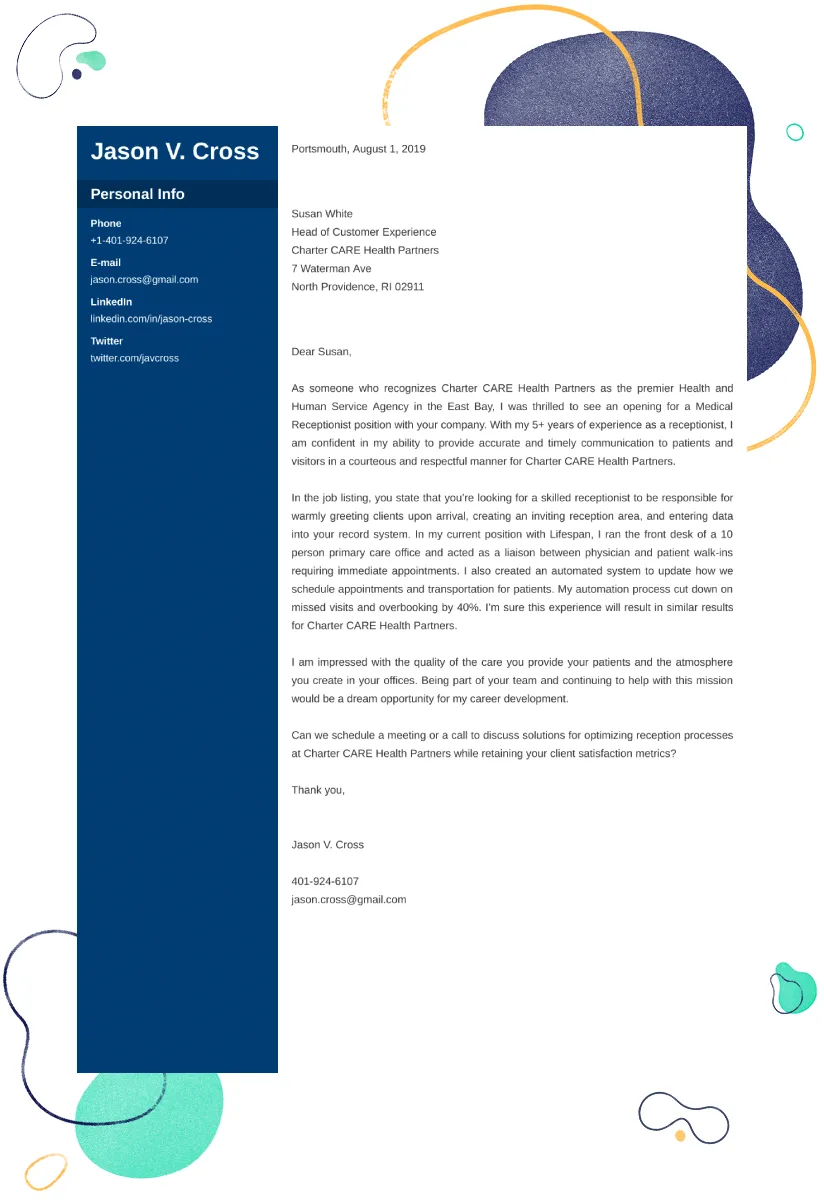
Use a professional greeting such as “Dear Mr./Ms./Mx. [Last Name]” or “Dear Hiring Manager” to begin your letter. Avoid informal greetings like “Hi” or “Hello.” This sets a professional tone from the outset and shows respect for the recipient. Ensure the greeting matches the formality of the job and company culture.
The Opening Paragraph Grab Attention
The opening paragraph is crucial for grabbing the reader’s attention. Start by stating the position you’re applying for and where you saw the job posting. Briefly mention why you’re excited about the role and company. This sets the tone for your letter and motivates the reader to continue. Consider using a compelling sentence or anecdote to immediately capture their interest. Show enthusiasm and quickly demonstrate your understanding of the role and the company’s goals.
Highlighting Relevant Skills
In the body of your cover letter, emphasize the skills and experiences that make you an ideal candidate. The best approach is to align your skills with the job description and company needs. Provide concrete examples of how you’ve used these skills in previous roles. Quantify your achievements whenever possible to show impact. Tailoring this section to the specific job requirements can greatly enhance your chances of securing an interview. Focus on demonstrating how your skills align with the core responsibilities outlined in the job posting.
Communication Skills
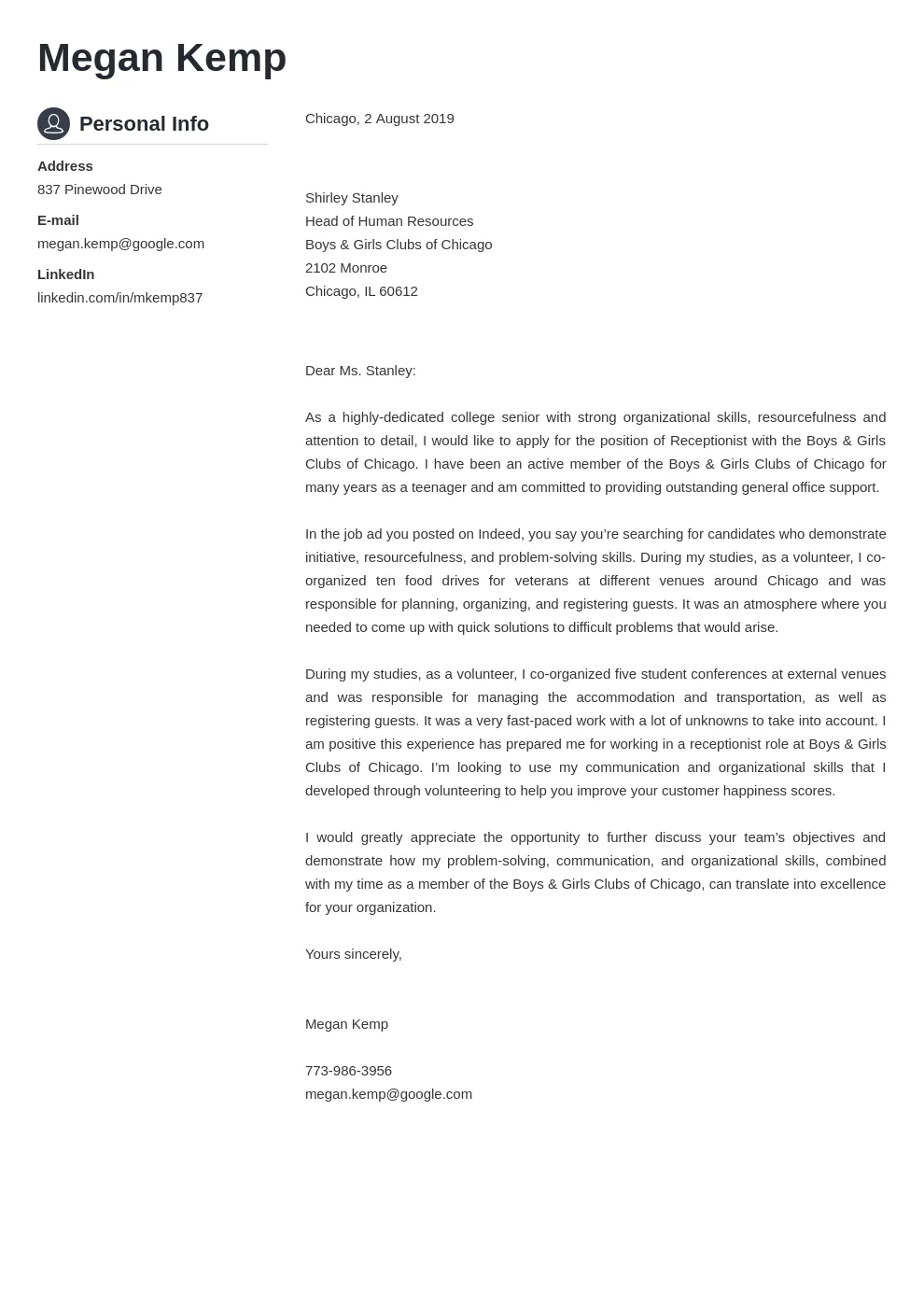
Receptionists need to be excellent communicators. Highlight your ability to interact professionally with visitors, handle phone calls, and manage email correspondence. Give an example of how you have effectively communicated with clients, colleagues, or supervisors. Emphasize both written and verbal communication skills. Being able to clearly and concisely relay information is vital for this role. Make sure to demonstrate your active listening skills as well, mentioning how you pay attention to detail when listening to a client’s needs. You can use an example to illustrate this, such as, ‘When a client called with a complex issue, I actively listened and took detailed notes to ensure I could provide all necessary information’.
Organizational Skills
Receptionists are often responsible for administrative tasks, such as scheduling appointments, managing calendars, and organizing documents. Showcase your organizational skills by highlighting your ability to multitask, prioritize tasks, and maintain an organized workspace. You could mention previous experience in managing schedules, coordinating meetings, or organizing files. Provide a specific example to show your organizational ability, like, ‘I managed a busy schedule with over 50 appointments per week while ensuring all details were accurately recorded’. This shows that you have the ability to keep things running smoothly.
Customer Service Skills
Receptionists are usually the first point of contact for the company, therefore, customer service skills are critical. Demonstrate your ability to provide excellent customer service by highlighting your friendly demeanor, ability to handle complaints, and your proactive approach to meeting customer needs. Share an example of a time you went above and beyond to help a customer or client. Show how you use your soft skills to create positive experiences and build rapport with visitors, clients, and coworkers. This could be as simple as always having a smile or going out of your way to make sure a client feels welcome.
Showcasing Experience
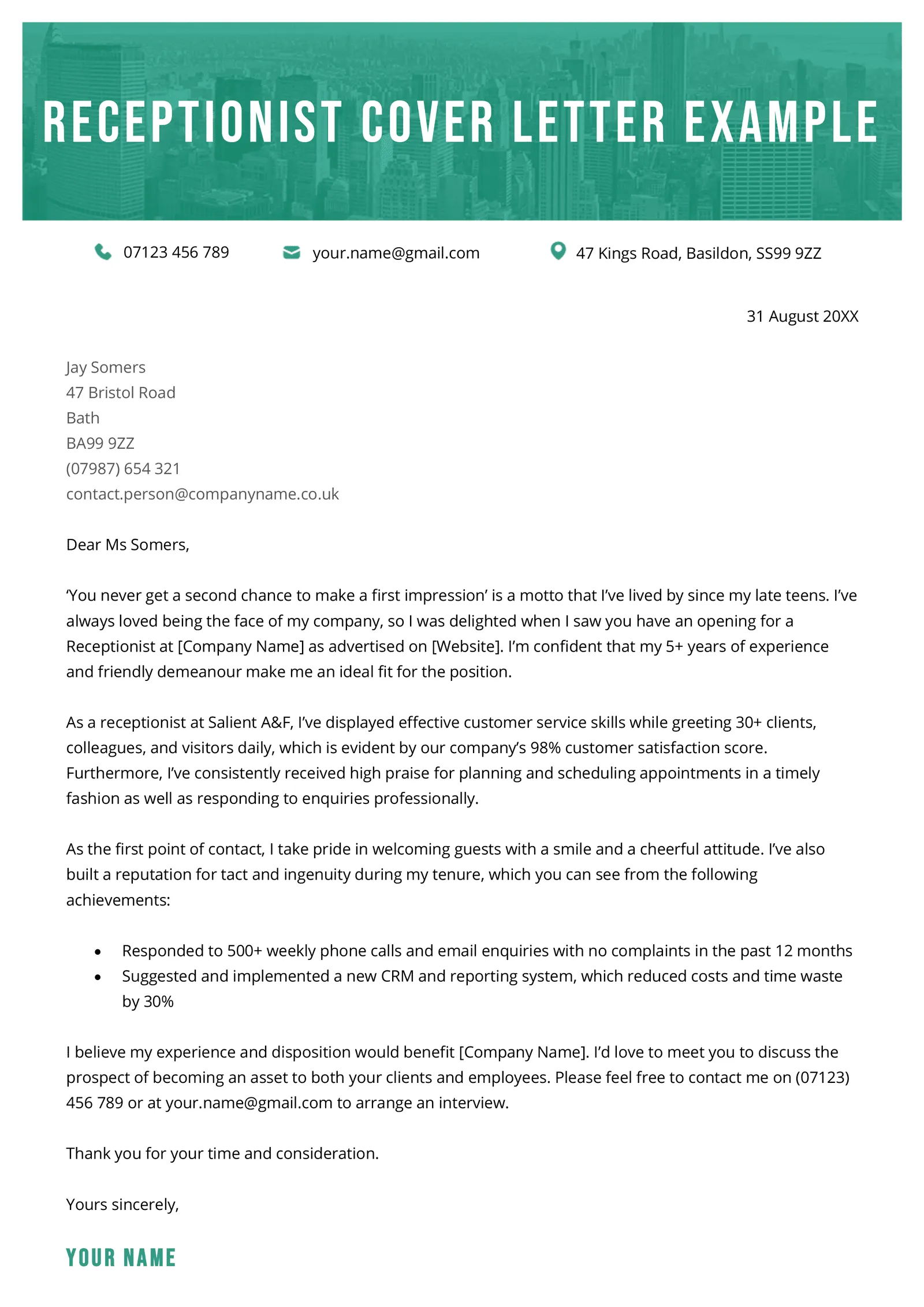
In this section, describe your relevant work experience. Focus on achievements and responsibilities that align with the receptionist position. Use the STAR method (Situation, Task, Action, Result) to provide specific examples of your accomplishments. Quantify your achievements wherever possible (e.g., “Managed over 100 calls daily”). Show, don’t just tell; illustrating your past success is key to convincing a potential employer that you can perform the job duties effectively.
Tailoring Your Letter
Tailoring your cover letter to each specific job is critical. Avoid sending a generic cover letter. Each application should be customized to reflect the job description and the company’s values. Show that you have researched the company and understand its needs. This personalization demonstrates your interest in the role. Show your ability to adapt and your commitment to the position by reading the job listing and adapting your skills accordingly.
Matching the Job Description
Carefully review the job description and identify the key skills and requirements. Use these keywords throughout your cover letter. Structure your letter to match the job description. Show how your skills and experience align with their specific needs. This shows that you have paid attention to what the company wants and that you are a good fit.
Using Keywords
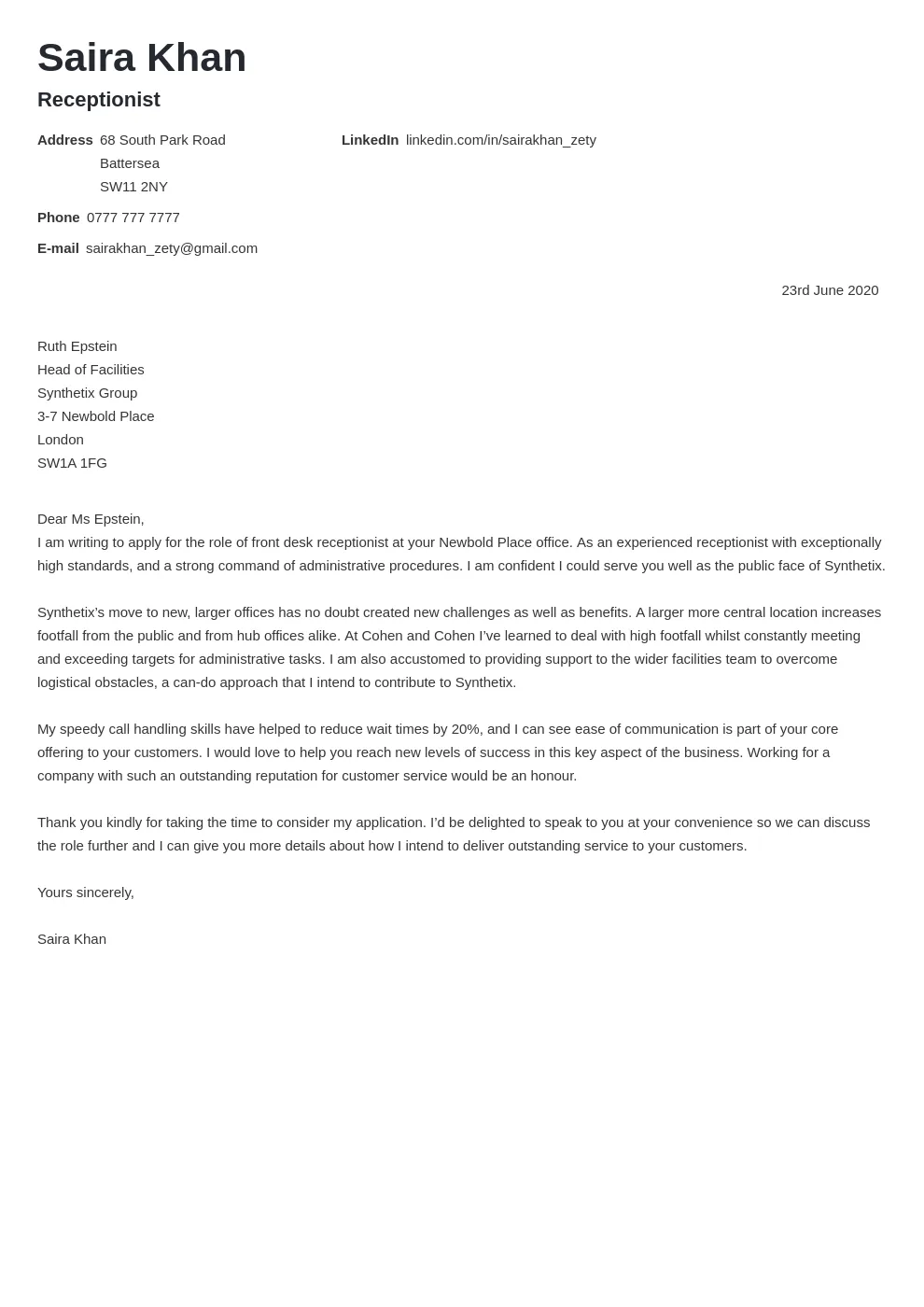
Incorporate relevant keywords from the job description into your cover letter. This will help your application pass through applicant tracking systems (ATS) and ensure it is seen by a human. Use keywords naturally and authentically. Avoid stuffing the letter with keywords to the point where it sounds unnatural. Be sure the keywords you use reflect your skills and that you have real experience.
Expressing Enthusiasm
Show your genuine enthusiasm for the position and the company. Explain what excites you about the role and why you are interested in working there. Research the company’s mission and values, then explain how you align with them. This enthusiasm helps you stand out from the crowd and make a lasting impression. Let the hiring manager know what interests you about the company’s culture and what you’re looking for in the role.
The Closing Paragraph Call to Action
End your cover letter with a strong call to action. Express your interest in an interview and state that you look forward to hearing from them soon. Thank the hiring manager for their time and consideration. Provide your contact information again, just in case it gets separated from your resume. A clear and professional closing increases your chances of being considered for the role.
Proofreading and Formatting

Before submitting your cover letter, carefully proofread it for any errors. Check for grammatical errors, typos, and formatting inconsistencies. Use a professional font and ensure that the letter is easy to read. Ask a friend or family member to review your cover letter as well. A polished and error-free cover letter shows professionalism and attention to detail.
Common Mistakes to Avoid
Several common mistakes can undermine your cover letter. Being aware of these mistakes and how to avoid them can greatly enhance your chances. Always try to make the letter as error-free as possible. Double-check all details and ensure your letter is a shining example of your skills.
Formatting Errors
Avoid poor formatting, such as inconsistent spacing or fonts. Ensure your letter has a professional layout. Poor formatting makes your letter harder to read and can create a negative impression. Always save your cover letter in a standard format, such as a PDF, to ensure that the formatting remains intact across different devices and operating systems. Using a template can help maintain consistent formatting and make your cover letter look professional. Make sure the margins are correct, the text is aligned properly, and the paragraphs are well-spaced.
Typos and Grammatical Errors
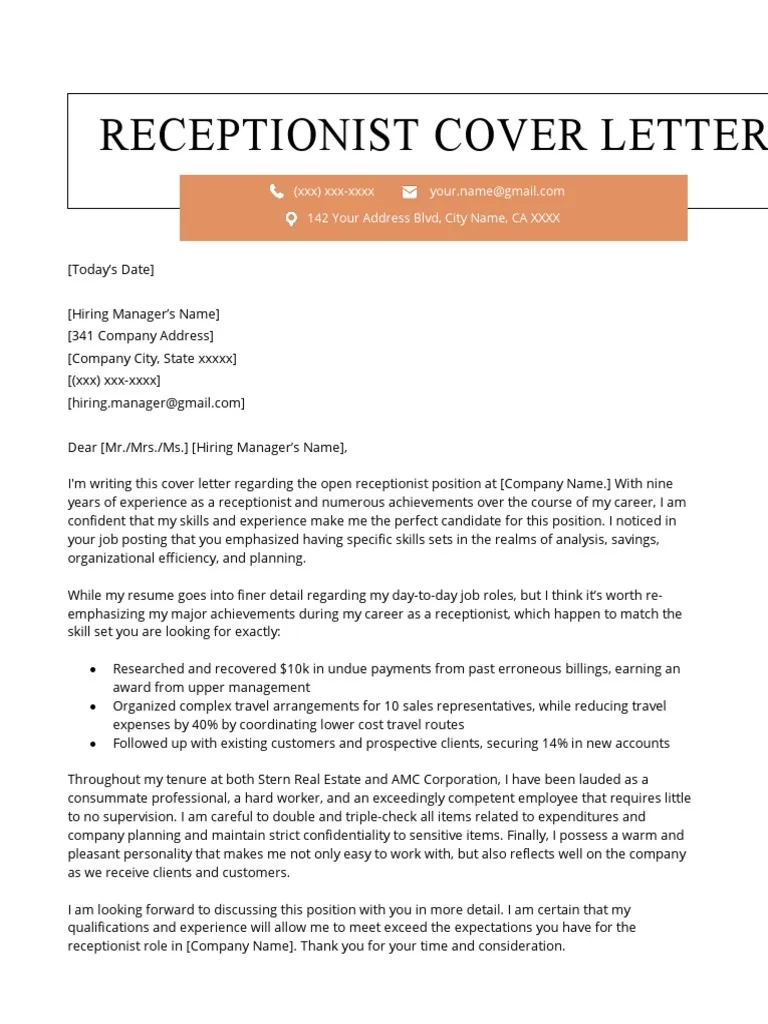
Typos and grammatical errors can damage your credibility. Proofread your cover letter carefully. Errors can make you appear careless and unprofessional. Double-check your spelling and grammar using a tool or having someone else review the letter. Ensure that all words are spelled correctly and that your sentences are grammatically sound. The letter must be perfect to make a good impression.
Lack of Customization
Avoid sending a generic cover letter. Tailor your letter to each specific job and company. Lack of customization shows a lack of interest in the position. Research the company and tailor your skills and experience to fit their needs. Always demonstrate to the hiring manager why you’re a perfect match for the role. Always customize your cover letter to match the job listing.
Receptionist Cover Letter Examples
Reviewing example cover letters can provide insights and inspiration. Search online for receptionist cover letter examples. Tailor the templates to your own experience and the specific requirements of the job. Analyze the structure, language, and content of these examples. Remember to adapt the examples to your unique qualifications and the specific job you’re applying for. Use these as a starting point for crafting your cover letter. Adapt and modify the templates to fit the job requirements and highlight your unique skills and experiences. This will help you get the interview and, eventually, the job.
